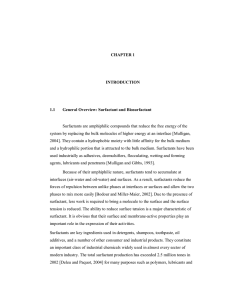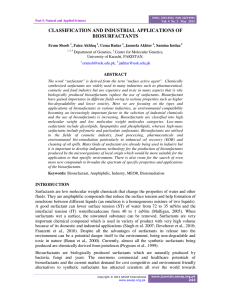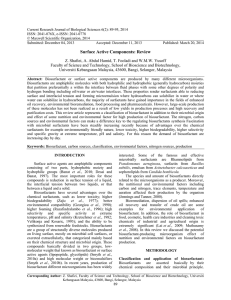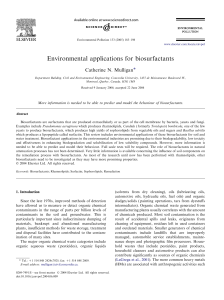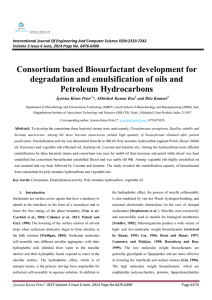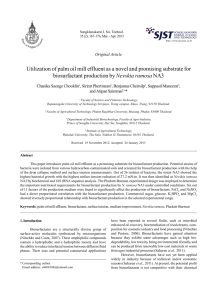Submited paper
advertisement
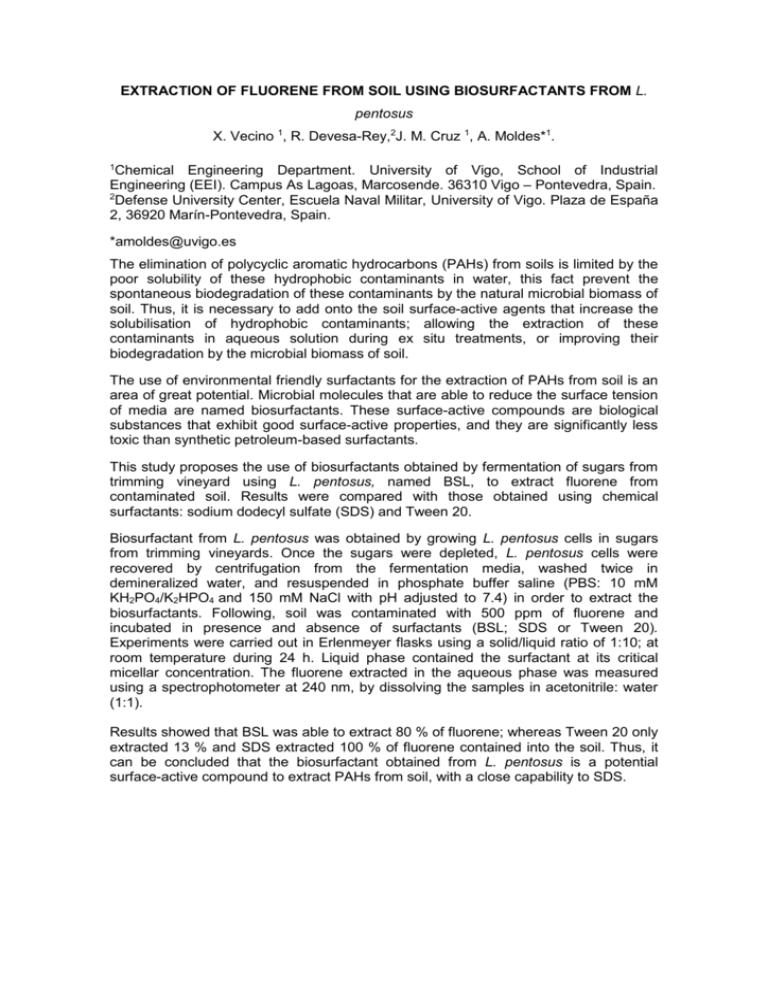
EXTRACTION OF FLUORENE FROM SOIL USING BIOSURFACTANTS FROM L. pentosus 1 X. Vecino , R. Devesa-Rey,2J. M. Cruz 1, A. Moldes*1. 1 Chemical Engineering Department. University of Vigo, School of Industrial Engineering (EEI). Campus As Lagoas, Marcosende. 36310 Vigo – Pontevedra, Spain. 2 Defense University Center, Escuela Naval Militar, University of Vigo. Plaza de España 2, 36920 Marín-Pontevedra, Spain. *amoldes@uvigo.es The elimination of polycyclic aromatic hydrocarbons (PAHs) from soils is limited by the poor solubility of these hydrophobic contaminants in water, this fact prevent the spontaneous biodegradation of these contaminants by the natural microbial biomass of soil. Thus, it is necessary to add onto the soil surface-active agents that increase the solubilisation of hydrophobic contaminants; allowing the extraction of these contaminants in aqueous solution during ex situ treatments, or improving their biodegradation by the microbial biomass of soil. The use of environmental friendly surfactants for the extraction of PAHs from soil is an area of great potential. Microbial molecules that are able to reduce the surface tension of media are named biosurfactants. These surface-active compounds are biological substances that exhibit good surface-active properties, and they are significantly less toxic than synthetic petroleum-based surfactants. This study proposes the use of biosurfactants obtained by fermentation of sugars from trimming vineyard using L. pentosus, named BSL, to extract fluorene from contaminated soil. Results were compared with those obtained using chemical surfactants: sodium dodecyl sulfate (SDS) and Tween 20. Biosurfactant from L. pentosus was obtained by growing L. pentosus cells in sugars from trimming vineyards. Once the sugars were depleted, L. pentosus cells were recovered by centrifugation from the fermentation media, washed twice in demineralized water, and resuspended in phosphate buffer saline (PBS: 10 mM KH2PO4/K2HPO4 and 150 mM NaCl with pH adjusted to 7.4) in order to extract the biosurfactants. Following, soil was contaminated with 500 ppm of fluorene and incubated in presence and absence of surfactants (BSL; SDS or Tween 20). Experiments were carried out in Erlenmeyer flasks using a solid/liquid ratio of 1:10; at room temperature during 24 h. Liquid phase contained the surfactant at its critical micellar concentration. The fluorene extracted in the aqueous phase was measured using a spectrophotometer at 240 nm, by dissolving the samples in acetonitrile: water (1:1). Results showed that BSL was able to extract 80 % of fluorene; whereas Tween 20 only extracted 13 % and SDS extracted 100 % of fluorene contained into the soil. Thus, it can be concluded that the biosurfactant obtained from L. pentosus is a potential surface-active compound to extract PAHs from soil, with a close capability to SDS.





